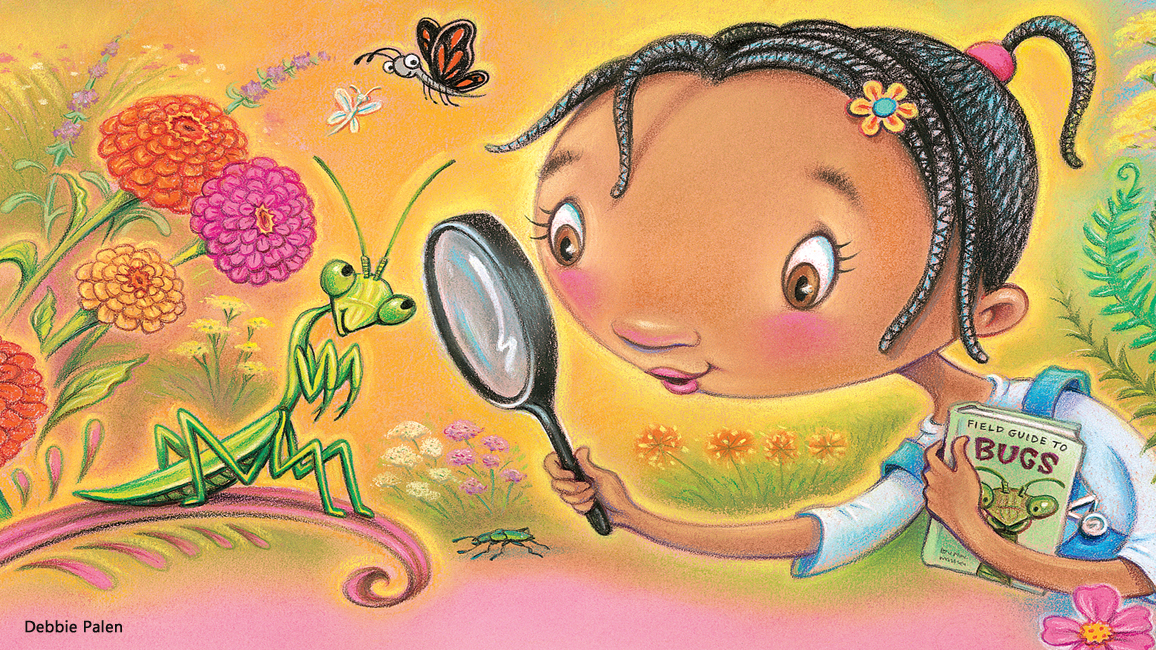
by Kate Hofmann
Some “bugs” are bothersome, but plenty aren’t pests at all. Set off on a quest for the best kinds of bugs—and see who you meet!
What You Need
- insect field guide
- magnifying glass
- sketchbook and pencil (optional)
What You Do
Good bugs are all around. Do you know which ones live in your yard or neighborhood? Grab a field guide to insects and a magnifying glass, and go find out! Here’s what to look for:
 Predator insects, such as lacewings, ladybugs, praying mantises, and ground beetles, which eat the “bad bugs.”
Predator insects, such as lacewings, ladybugs, praying mantises, and ground beetles, which eat the “bad bugs.”- Parasitic wasps, which lay eggs on certain troublemaking caterpillars and other pests.
- Pollinators such as bees, butterflies and moths.
- Recyclers such as carrion beetles.
Keep a list of what you find. Soon you’ll be an expert on the benefits of bugs!
Want to make your yard or garden a cozier place for good bugs to hang out in? Here are five ideas to share with your family:
- Skip the pesticides. They kill the good guys along with the pests (and aren’t healthy for the environment, people, or pets).
- Plant flowers that provide food for helpful insects. Try herbs such as dill, cilantro, fennel, and parsley, as well as flowers including sweet alyssum, yarrow, lavender, cosmos, zinnias, and sunflowers.
- Aim for variety. Choose lots of different kinds of flowers. That way, there’s a good chance something will be blooming to attract good bugs all season long.
- Provide shelter for good bugs. Trees, shrubs, ground covers, and grasses make safe places to rest. Mulch and stepping stones are nice to hide under.
- Add water. Place some rocks in a saucer and keep it filled with fresh water during dry spells.
Give them a good home, and good bugs will soon be hard at work, helping out in your garden!
Learn about bug hotels—and how you can create one for your yard!
